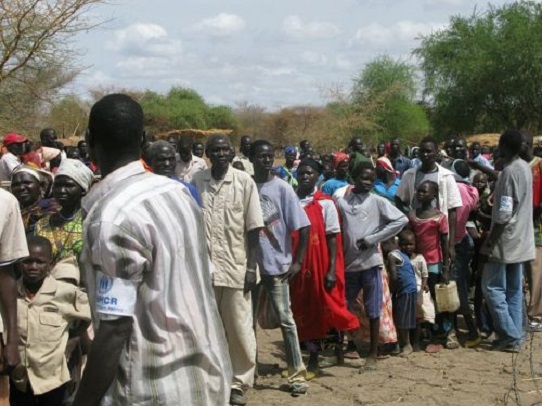
Opinion | Cities Must Prepare for Waves of Climate Refugees

Robert Stansfield/Department for International Development/Wikimedia Commons | The Energy Mix
The current narrative linking international human migration with increased security risks should not be accepted at face value, say experts, and policy-makers must focus on building cohesive strategies and support systems for migration within borders in anticipation of large influxes of climate refugees, a conference audience heard last week.
“The majority of the population is on the move due to the impacts of climate change, be it within their own country or within a geographical limited region,” said Manuel Marques Pereira, head of the migration, environment, climate change and risk reduction division at the International Organization for Migration (IOM), told the Montreal Climate Security Summit May 12.
Pereira added that this internal migration is often linked to poor access to services and livelihood security, making it essential to address the underlying issues that are the primary drivers of displacement.
“It’s very important that we understand that the concept around displacement within countries is a concept of internal displacement, in which the member states have the duty to protect their own citizens,” Pereira said.
Dr. Kanta Kumari Rigaud, lead environmental specialist and regional climate change coordinator for Africa at the World Bank, called attention to the organization’s 2021 projection that 216 million people will be displaced globally by 2050. She added that the projection was a worst case scenario that could be reduced with proactive and effective policies that account for locality and geography.
“The bottom line from the World Bank is that we cannot look at development and poverty eradication… without looking at the issues of climate change,” Rigaud said. “And we cannot ignore mobility, which is going to really impact sometimes the poorest and most vulnerable in those localities.”
Effective policies will not only invest in existing infrastructure and support systems, but develop new conventions for dealing with the root causes of migration. This is especially true for urban areas that have greater capacity to accommodate support systems, but where failing to develop resources for migrants could also lead to greater risk that can threaten security.
“Urban planning is the growth in the development of sustainable cities, and [of] cities that are capable of dealing, not only with socio-demographic transformations, but also with climate transformations,” said Pereira.
Rigaud agreed that cities will play an important role in solving the human migration crisis, adding that an urban transition is already under way. Climate factors will be at least partly responsible for increased rural-to-urban migration in places like Sub-Saharan Africa, where populations in cities are expected to rise from 400 million to 1.2 billion people by 2050, she said.
“We need to look at cities across time scales, and we need to anticipate and plan for some of these smaller cities” to accommodate large population influxes, Rigaud told participants. It will be critically important to look at and anticipate this growth—fueled partly by demographics, partly by migration factors—to ensure that “these cities, from the outset, plan for these multiple types of hazards, are green, resilient, and inclusive, and create the kinds of jobs that are really needed for both the youth and others.”
Dr. Aderomola Adeola, assistant director of the Centre for Refugee Studies at York University, agreed on the importance of urban policy for supporting future migration, but said gaps in ongoing legal conversations on human displacement will need to be filled to develop effective policy.
Adeola said the United Nations’ 1951 Refugee Convention fails to include climate impacts in its criteria for persecution suffered by displaced persons, but said theories are being developed to overcome this barrier.
She warned that there is a pressing gap in the legal conversation, arising from the siloed nature of plans for climate adaptation and climate displacement. By engaging stakeholders in multisectoral projects across various levels of government, “we can actually reach such gaps and ensure that… we develop national government policies that have an inclusiveness context,” Adeola said.
Author:Christopher Bonasia @CBonasia_
Source:The Energy Mix



